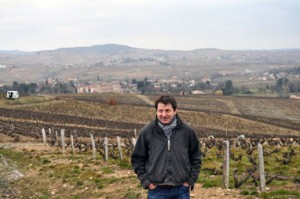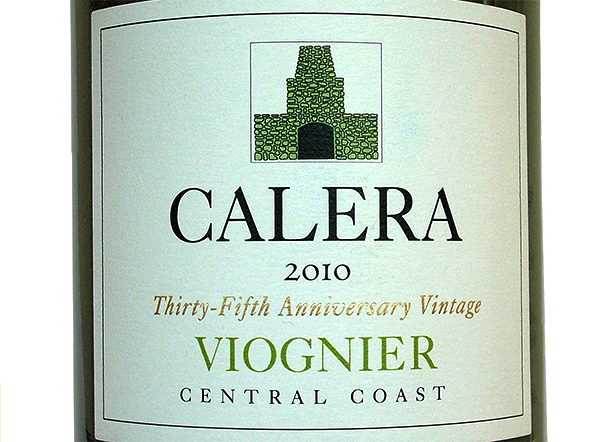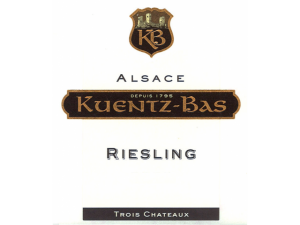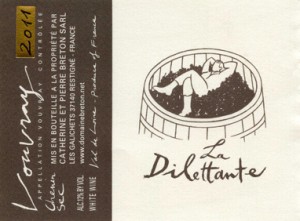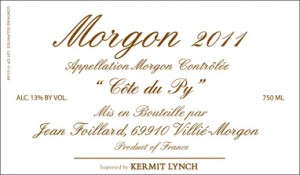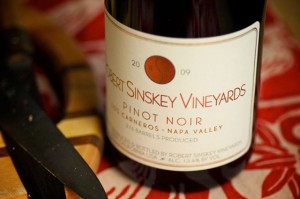The Thanksgiving table has increasingly become an important stage for maintaining and developing close family relationships. Among the types of guests that will be joining families for the first time this season: a variety of nervous lovers hoping to be considered as potential spouses, first-time step-parents hoping to impress their new step-children, and long-lost relatives trying to fit back in.
Amidst all these hope and fears are the ubiquitous turkey, and more often than not, wine. If your modus operandi this Thanksgiving is to impress with a bottle, fear not — we got this.
Operating under the assumption we’re pairing our wine with turkey, as well as an undetermined amount of accompaniments to said turkey, we’ll do our best to look for balanced wines that pair with a variety of tastes and flavors, bearing in mind that stuffing, sauce, any type of potato (e.g., fingerling, sweet, yam, Peruvian or red), and a vegetable such as green beans or something similar, will be present.
Serving Wines
This is where the arcane rituals of the wine world start to freak the layman out. The handling and serving of wine are extremely important aspects of the total experience, and correspondingly have clear-cut rules in place to minimize mistakes. Here are some pointers that will help optimize the enjoyment of your wine:
The glass:
This is where you can “lose” your wine to an inferior vessel that doesn’t allow the wine to express itself fully. The glass does affect the taste of the wine. That being said, it’s not necessary to run out and buy a small-fortune’s worth of Riedel Sommelier Series vessels for the holiday table. Most “wine” glasses will allow the wine to unwind in the glass and loosen its aromas, and with the young wines suggested here, there shouldn’t be too much lost in translation. That being said, if you have the proper stemware (particularly Burgundy glasses for Pinot!) by all means . . . break them out. If there is one glass per person, rinse the glass out with a little water between white and reds. Yes, serve (or at least offer) WHITES first!
Temperature:
White wines should be chilled. Not frozen, not cool, but cold. If the wine is room temperature when purchased, you want it in the refrigerator for close to a half-hour (if it’s white) prior to serving. You want the wine to be crisp, not flabby. This is particularly important with Viognier.
Red wines should be served cool to the touch. Once again, cool in the fridge, this time for twenty minutes prior to serving.
Portions:
A bottle of wine contains enough juice for 4 full glasses, with a little left over. If there are ten people at the table . . . well, you do the math. The wines offered here are reasonable enough to where one might purchase several bottles and not be left homeless in the aftermath. You don’t want anyone feeling left out, so plan on buying at least several bottles of a single wine.
Decanting:
Is usually suggested, but as its the holiday table and folks tend to linger . . . the wines could unwind in glass. Rule of thumb is to decant, but its fine to let the wines aerate in glass, just remind your cohort to (carefully) swirl. We’re looking to just revive the taste from time to time with a few swirls.
White Wines
For one reason or another, White Wine seems to suffer from an inferiority complex when compared to its Red counterpart. It takes a serious wine appreciator to look at the bottle of Riesling or Viognier in your hand and truly appreciate what you’ve brought to the table. Fear not, time is on your side. Once the bottle’s opened and the feast commences, there will be surprised faces all around you.
Viognier
This French grape from the Rhône has become popular in America over the past decade with a corresponding rise in acreage planted in California and Australia, where the wines are fuller-bodied and rife with the flavors of fresh fruits such as peach, plum, apricot, lemon and lime. The French versions tend to be more floral and acidic. A young wine will go down easy and be refreshing. Look for a dry style of Viognier with limited oak influence — as the wine shows a great deal of nuance, it’s best to get a version that’s had minimal oak contact. Malolactic fermentation is a contentious point for Viognier. Some argue the wine is naturally low in acid, and there’s no need to dissipate that further with Malolactic fermentation (making the wine less acidic and flatter).
2010 Calera Central Coast Viognier
The Wine: 100% Viognier from the Gemelli Vineyard in San Benito County. Whole cluster pressed and fermented in neutral oak with malolactic fermentation taking place therein. Bottled with light filtration.
The Taste: Pear and lilac with a hint of jasmine, lemon chiffon and licorice. Peach, nectarine and honeysuckle with a round, plush mouthfeel.
Get It: at OBL Wine shop, $37.99
Riesling
Riesling hails from the central plateau around the Rhine and Mosel rivers. The best Rieslings traditionally come from the Mosel-Saar-Ruwer river areas of Germany and can vary in dryness from Tröcken to Tröckenbeerenauslese — from bone dry to nearly syrupy sweet. Equally as appealing as German Riesling is Alsatian Riesling, from Eastern France. The wines tend to be a bit fleshier than their German counterparts, and are almost always dry. The typical fruits associated with Riesling — peach, apricot, nectarine and green apple — seem more forward in the Alsatian versions, and have toned down traces of the intense slatey and petrol-like notes of their German counterparts.
American Riesling flourishes well in Washington State, California’s Mendocino Coast, and the Finger Lakes Area of New York. They uniformly lack the intense petrol and slatey qualities of German Riesling, but can show these, among all Riesling’s other positive attributes in spades frequently.
If there’s a ham on the Thanksgiving table, it would be sad to not try it with a glass of Riesling. The turkey will be excellent with it, but pork lovers will swoon when these two are mixed.
Kuentz-Bas Riesling “Trois Chateaux”
The Wine:
100 % Biodynamically farmed Riesling from 25-45 year old vineyard.
The Taste:
Intense, almost briny with notes of orange peel and wild herbs.
Get it: Kermit Lynch wines.
*2nd choice: 2009 Trimbach Riesling, at OBL Wine Shop, $25.49
Chenin Blanc
Another French grape that has roots in the Loire Valley, Chenin, like Riesling, is much like a Gemini person: there are two personalities hiding in there. One is lush and honeyed, floral with mouth-watering lushness; the other, cool and chalky with limestone, traces of clay and a hint of saltiness. They invariably balance well with one another and combine to make an unforgettable experience. The Clarksburg AVA, just outside Sacramento on a tributary of the San Francisco Bay, produces some of the best Chenin outside of France, most of it quite reasonably priced.
“La Dilettante” Sec
The Wine: 100% Chenin Blanc from 50-year-old vines planted in flinty soil. No malolactic fermentation. Organic or Biodynamic!
The Taste: Deftly balanced between sharp acidity expressed through lemon and mineral, with a fleeting mouthfeel of honey and apricot that’s rich and supple.
Get It: Through Kermit Lynch, but hurry!
Red Wines
Red Wines are dicey, but with the right bottle, the pairing can be magical. The key is body — the less the better. If you or your host love fruit-forward, full-bodied Reds, today is not your day. Cabernet Sauvignon is a huge mistake, as is Merlot. You’ll have to go with an elegant Red that drinks like a white, i.e., a wine that doesn’t overpower that supple white meat, or alienate condiments or side dishes.
Gamay Noir
The Wines of Beaujolais have gained a reputation in America over the past several decades for being inexpensive wines that are quaffable. The deep, fresh berry flavors remind one of New Mexican chokecherry wine, and they, like chokecherry, are true “village” wines, artisanal wines that reflect the local fabric, and are drunk locally. Beaujolais-Villages is the most consumed, and are the entry-level wines for the area. Beaujolais Supérieur must have a minimum potential alcohol level of 10.5 % and are considered to have more depth. Within this classification are ten communes which qualify for “Cru” status, meaning that they are wines of such distinction that they deserve their own appellation. This is where Gamay becomes something that will make the meal memorable. These are serious wines that can impress even the most discerning oenophile with its depth and character. Of the ten Cru’s, Morgon is considered the most important, with wines that come from the slope of the Côte de Py being the finest.
2011 Jean Foillard Morgon, Côte du Py
The Wine: 100% Organic Beaujolais from a single vineyard composed of schist, granite and manganese.
The Taste: Fresh red berries, predominated by ripe strawberry. Ruby red and Pinot-like in its complexity, with an earthy quality.
Get it: Kermit Lynch ($30-40)
*2nd choice: 2009 Chateau Des Jacques Morgon, OBL Wine Shop, $26.49
Pinot Noir
No other grape can elicit superlatives from oenophiles like Pinot does. It’s a wine that tends to cause its consumers to rhapsodize about its phantom-like nature. With a far-away look in their eyes, they’ll go on until they realize its best just to shut up and give in to the haunting qualities of the grape. The good news is that we won’t suggest a Grand Cru from your cellar, but a younger, more fruit-forward style that is far less expensive than its Grand Cru counterparts. As with all the other wines suggested, we suggest a wine with minimal oak influence, and at least organically or sustainably farmed. If you can get a Biodynamic version of any of the wines suggested — great! California or Oregon are excellent places for Pinots that won’t break the bank and can fit the suggested bill.

